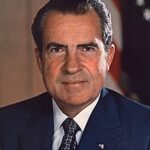President Nixon transformed Southern education through systematic school desegregation efforts beginning in 1970. His administration achieved remarkable progress where previous efforts had stalled.
The Strategic Approach
Nixon chose pragmatic negotiation over confrontational tactics used by earlier administrations. He appointed moderate Republicans to key positions in the Department of Health, Education, and Welfare. Secretary Robert Finch and Leon Panetta led enforcement efforts with careful diplomatic pressure. 📊 The results were unprecedented-Black students in all-Black schools dropped from 70% to 18% during Nixon’s presidency.
Federal Enforcement Mechanisms
The administration used funding leverage to encourage compliance rather than force. Schools faced loss of federal aid if they maintained segregated systems. Nixon’s team worked directly with Southern school districts to develop integration plans. ⚠️ This approach avoided violent confrontations that had characterized earlier desegregation efforts. The strategy proved more effective than dramatic federal interventions of the 1960s.
Impact:
Nixon’s school desegregation policies created lasting transformation across the American South and beyond. The comprehensive approach changed millions of lives permanently.
Educational Transformation
🔥 Southern school systems underwent complete restructuring during Nixon’s tenure. Previously segregated districts developed integrated curricula and mixed teaching staffs. Student achievement gaps began narrowing as resources became more equally distributed. The policy affected over 3 million African American students across eleven Southern states.
Political and Social Consequences
Nixon’s pragmatic approach reduced white resistance to integration compared to previous methods. Local communities participated in planning rather than resisting federal mandates. 🌍 International observers praised America’s progress on racial equality during the Cold War era. The success enhanced America’s global reputation while competing with communist nations for influence.
Long-term Historical Legacy
Historians consistently rank Nixon’s desegregation efforts among his most successful domestic policies. The achievement contradicted his later reputation and demonstrated effective bipartisan civil rights progress. Educational integration laid groundwork for broader social integration in subsequent decades. Modern diverse educational environments trace directly to these foundational policy changes implemented during Nixon’s presidency.
